Introduction
Japanese desserts are a delightful blend of tradition, artistry, and unique flavors. Whether you’re craving something sweet and chewy like mochi or a refreshing matcha-flavored delicacy, Japan’s dessert culture offers something for every taste. Ready to explore the world of Japanese sweets? Let’s dive in and uncover these mouthwatering treats that will transport you to Japan!
What Are Japanese Desserts and Why Are They So Special?
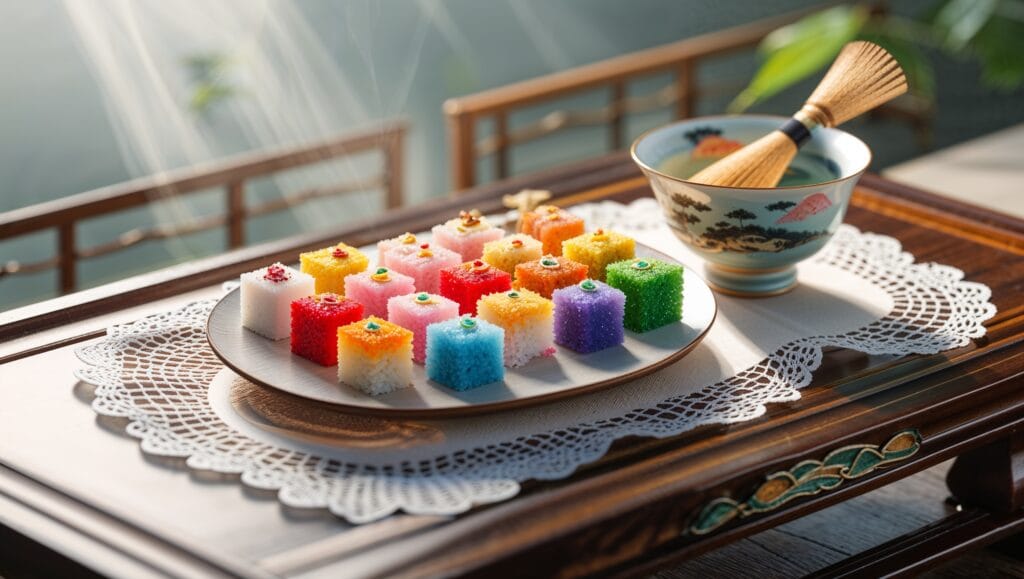
Japanese desserts, known as wagashi (和菓子), are deeply rooted in tradition and often reflect the country’s seasonal changes. Unlike Western sweets, which rely heavily on butter and sugar, Japanese desserts use natural ingredients like sweet beans, rice flour, and matcha. Their textures and flavors range from chewy and gelatinous to crispy and airy, creating a unique sensory experience.
Many Japanese desserts are designed to be enjoyed with tea, enhancing their subtle sweetness. Traditional sweet-making techniques have been passed down for generations, making each dessert a work of art. In modern times, Japan has also embraced Western influences, creating fusion desserts that combine the best of both worlds. No matter your preference, there is a Japanese dessert that will capture your heart.
The Best Japanese Desserts You Need to Try! 🍡🍰
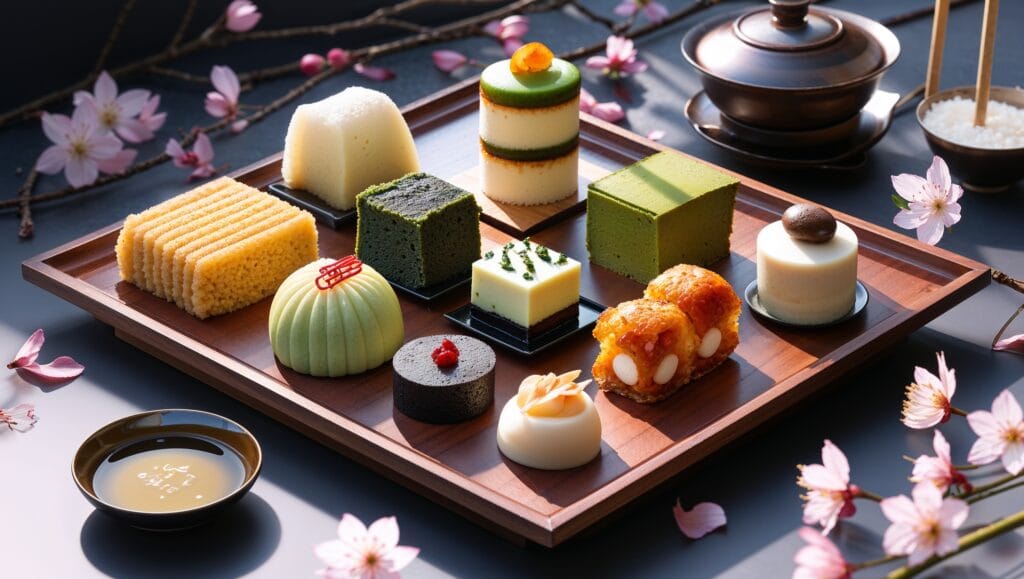
Japanese sweets are a feast for the senses, offering a combination of texture, flavor, and cultural significance. Whether you are visiting Japan or simply looking for new desserts to try at home, these treats will give you an unforgettable experience. Below, we will explore ten of the most famous Japanese desserts, each with its own distinct characteristics and flavors.
From chewy rice cakes to airy cheesecakes and crispy fish-shaped pastries, each dessert offers something unique. Some are tied to traditional tea ceremonies, while others are enjoyed as street food or festival treats. If you have a sweet tooth, you are in for a real adventure! Let’s explore these delightful creations one by one.
Mochi (餅) – The Chewy Rice Cake
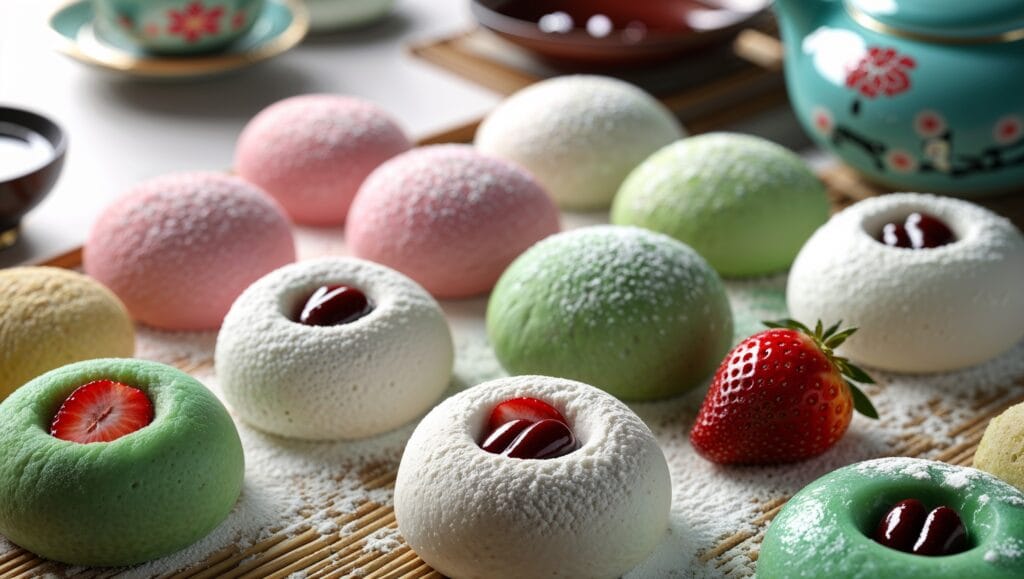
Mochi is one of Japan’s most beloved desserts. Made from glutinous rice, it has a soft, chewy texture and comes in many variations. Some popular types include:
- Daifuku (大福) – Mochi stuffed with sweet red bean paste (anko).
- Ichigo Daifuku (いちご大福) – Mochi with a whole strawberry inside.
- Yatsuhashi (八ツ橋) – A Kyoto specialty, often flavored with cinnamon.
Mochi is enjoyed all year round, but it is especially popular during New Year celebrations. During this time, families make kagami mochi, a special stacked mochi offering for good luck. The process of making mochi, called mochitsuki, is an event in itself, where rice is pounded into a smooth, stretchy consistency. Today, you can find mochi in various flavors, including matcha, chocolate, and even ice cream-filled varieties!
Taiyaki (たい焼き) – The Fish-Shaped Cake 🐟
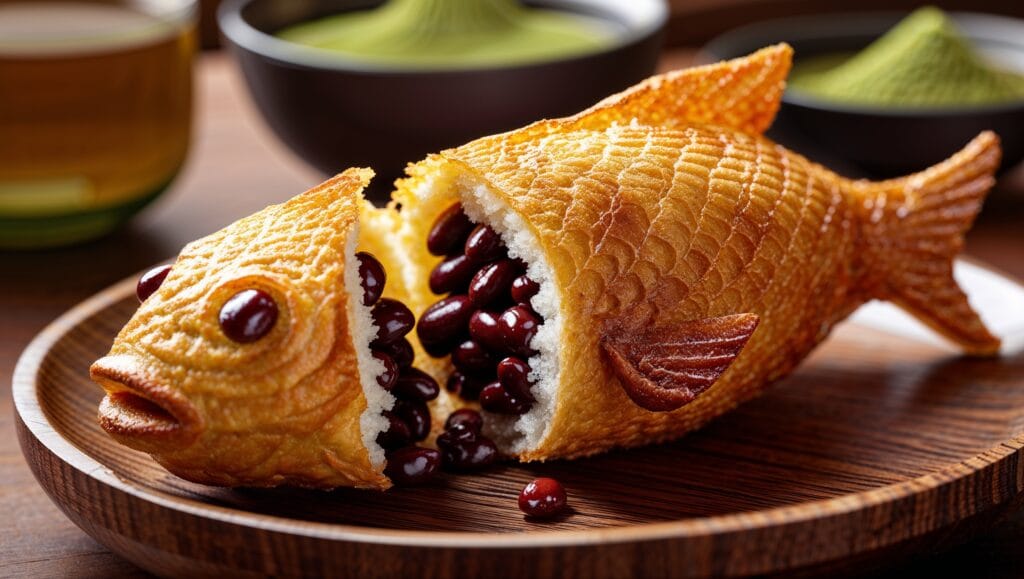
Taiyaki is a warm, crispy, fish-shaped cake filled with sweet fillings. Traditional fillings include:
- Anko (red bean paste) – The classic and most popular option.
- Custard – A creamy alternative for those who prefer a Western twist.
- Chocolate, cheese, or matcha – Modern variations that cater to all tastes.
Taiyaki is commonly found at street stalls and festivals, making it a nostalgic treat for many. The batter is similar to that of pancakes or waffles, poured into a special fish-shaped mold and cooked until golden brown. Each bite provides a delightful contrast between the crispy exterior and the warm, soft filling inside. Many shops in Japan now offer creative versions, including ice cream-stuffed taiyaki!
Dorayaki (どら焼き) – The Sweet Pancake Sandwich
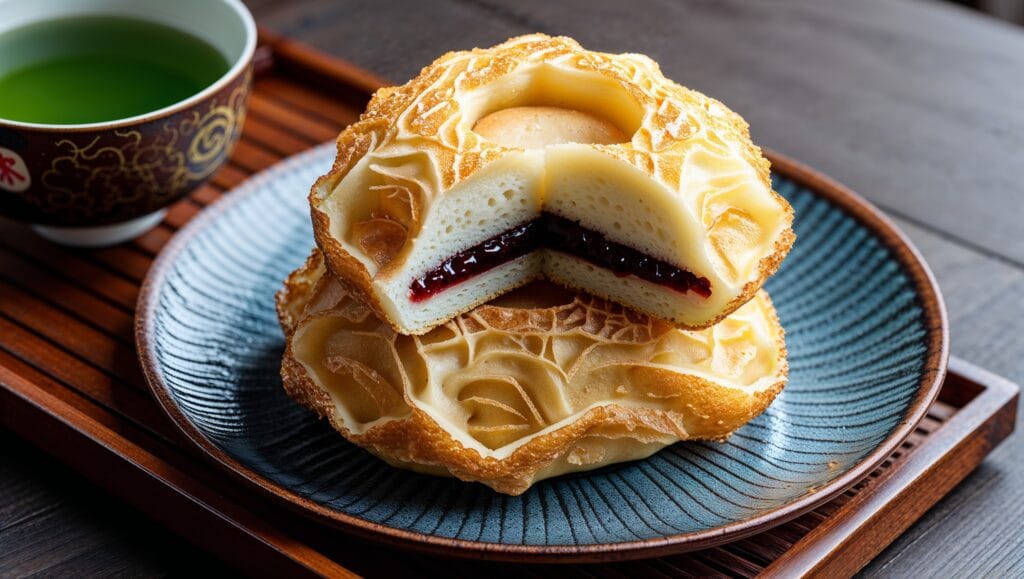
If you love pancakes, you’ll adore dorayaki! This dessert consists of two fluffy castella pancakes filled with sweet red bean paste. Some variations include:
- Matcha cream dorayaki
- Chocolate-filled dorayaki
- Whipped cream and fruit dorayaki
Dorayaki gained popularity worldwide thanks to Doraemon, Japan’s famous cartoon character, who adores this treat. The pancakes are made using honey, giving them a slightly sweet flavor and soft texture. Traditional dorayaki remains a favorite among locals, but many shops now experiment with flavors like caramel, peanut butter, and even ice cream-filled variations. Whether traditional or modern, dorayaki is a delicious snack for any time of the day.
Matcha Desserts – A Green Tea Lover’s Dream 🍵
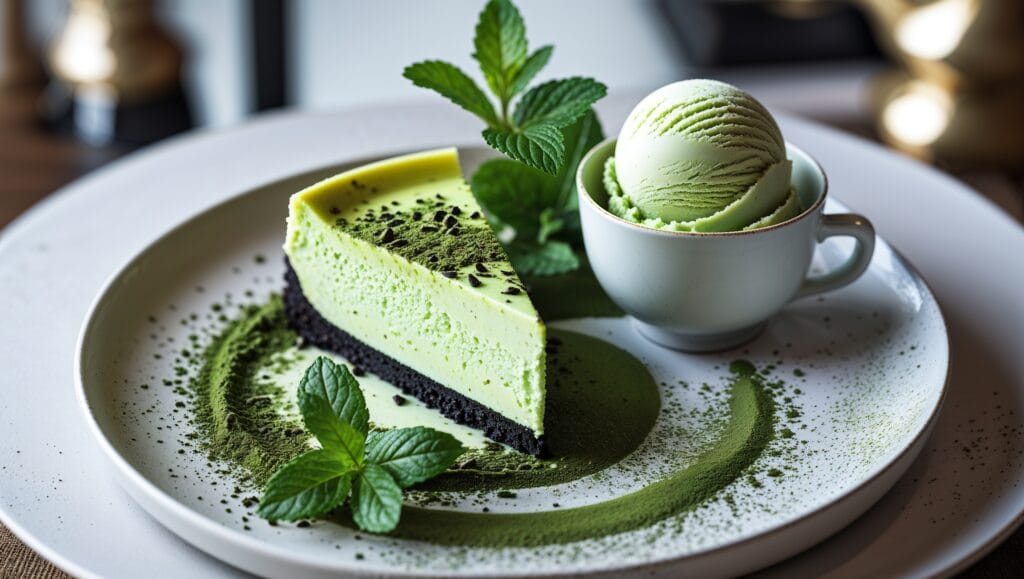
Matcha (抹茶), or powdered green tea, is a staple in Japanese desserts. Some must-try matcha treats include:
- Matcha ice cream – Rich, creamy, and slightly bitter-sweet.
- Matcha cheesecake – A fusion of Western and Japanese flavors.
- Matcha warabi mochi – A jelly-like sweet dusted with soybean flour.
Matcha desserts are not only delicious but also packed with antioxidants, making them a guilt-free indulgence! The earthy, slightly bitter taste of matcha pairs beautifully with sweet ingredients like red bean paste, white chocolate, or vanilla. Matcha is often used in both traditional sweets and modern café treats, making it a favorite among health-conscious dessert lovers worldwide.
Anmitsu (あんみつ) – The Refreshing Jelly Dessert
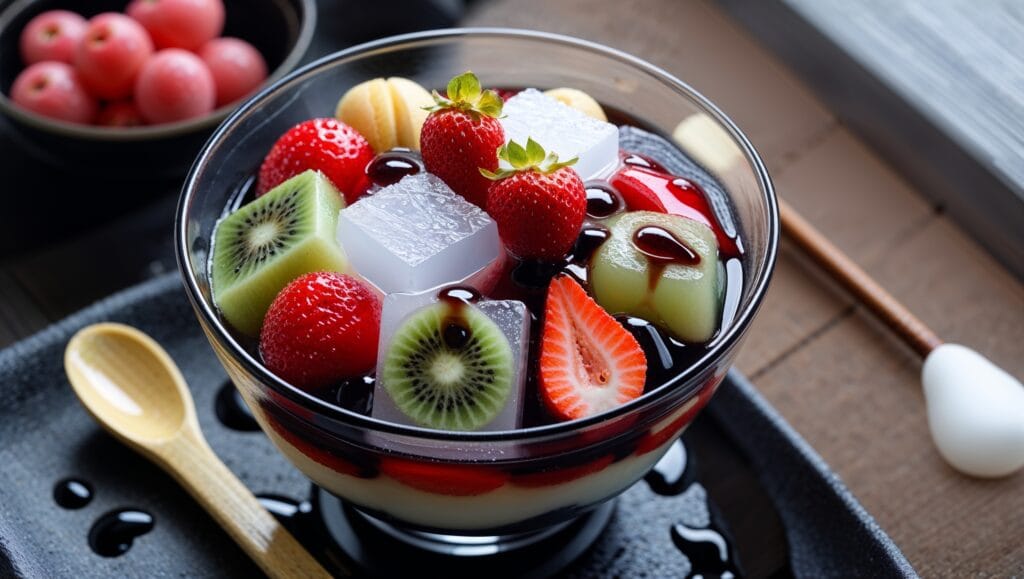
Anmitsu is a chilled dessert made of agar jelly cubes, red bean paste, mochi balls, and fresh fruits, topped with a drizzle of black sugar syrup (kuromitsu). It’s a perfect summer treat!
Some modern versions add ice cream or matcha-flavored jelly for an extra layer of indulgence. The agar jelly provides a light, refreshing texture, while the sweet syrup and toppings add depth to the flavor. This dessert has been enjoyed in Japan since the Meiji era and remains a popular choice, especially in traditional Japanese tea houses.
Yokan (羊羹) – The Elegant Sweet Jelly
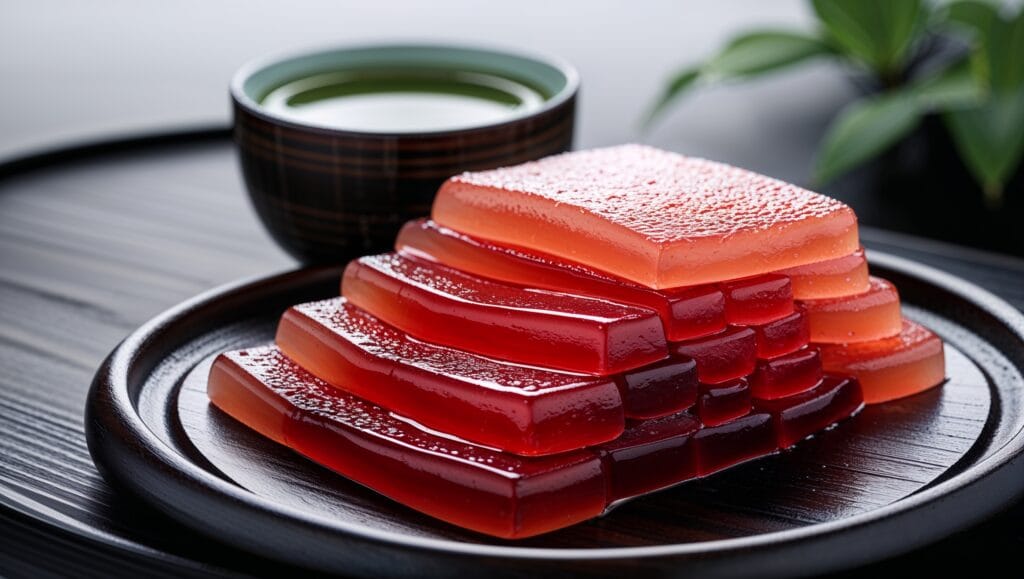
Yokan is a dense, jelly-like dessert made from red bean paste, agar, and sugar. It comes in two main varieties:
- Neri Yokan (練り羊羹) – A firmer, smoother version.
- Mizu Yokan (水羊羹) – A softer, water-based version enjoyed in summer.
Yokan pairs perfectly with green tea and is often served during tea ceremonies. The delicate balance of sweetness and subtle flavors makes it a sophisticated treat, often given as a gift in elegant packaging. Modern versions of yokan incorporate flavors like chestnut, matcha, and even coffee!
Japanese Cheesecake – The Fluffiest Cake Ever!
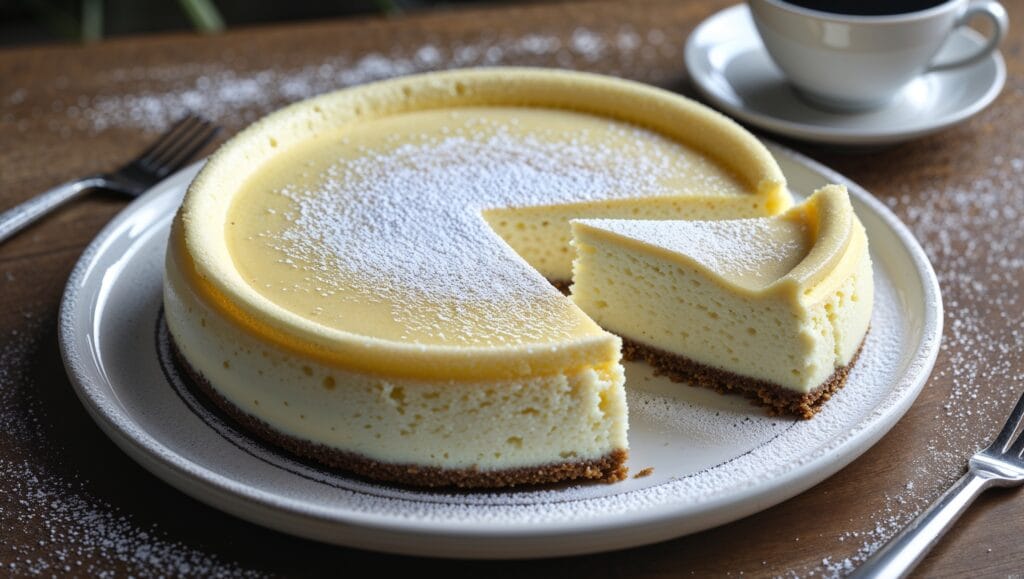
Japanese cheesecake is unlike the dense, rich American version. It is:
- Light, airy, and jiggly
- Less sweet, making it perfect for those who dislike overly sugary desserts
- Often flavored with cheese, matcha, or fruit
This melt-in-your-mouth cake has gained global popularity and is a must-try!
Dango (団子) – The Iconic Japanese Skewered Dumplings 🍡
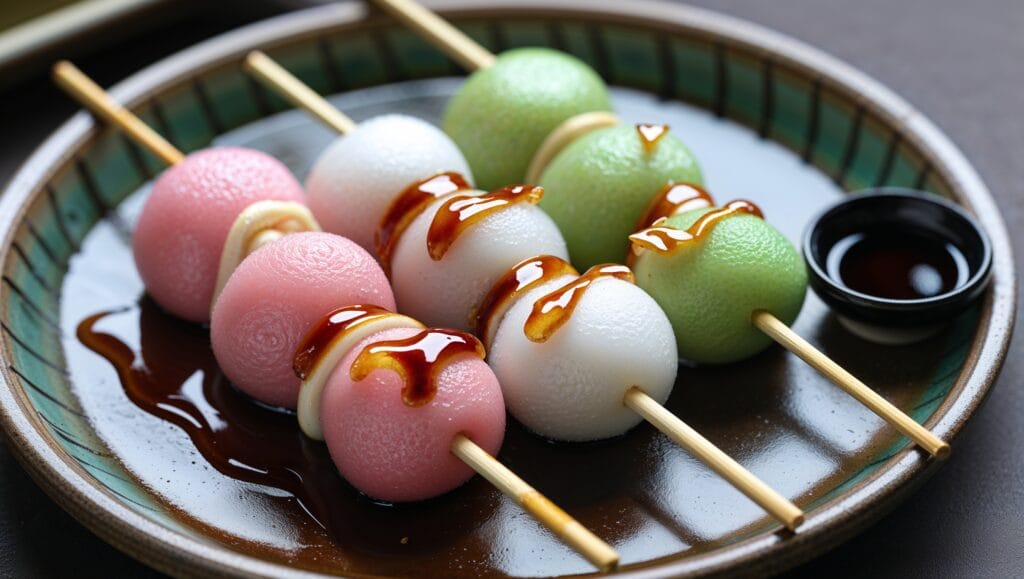
Dango are chewy rice flour dumplings served on skewers. They come in various flavors, including:
- Mitarashi Dango (みたらし団子) – Coated in a sweet soy sauce glaze.
- Anko Dango (あんこ団子) – Covered in sweet red bean paste.
- Hanami Dango (花見団子) – A colorful variety enjoyed during cherry blossom season.
Dango is a classic street food snack often paired with green tea.
Japanese Sweet Potato Dessert (さつまいもスイーツ)
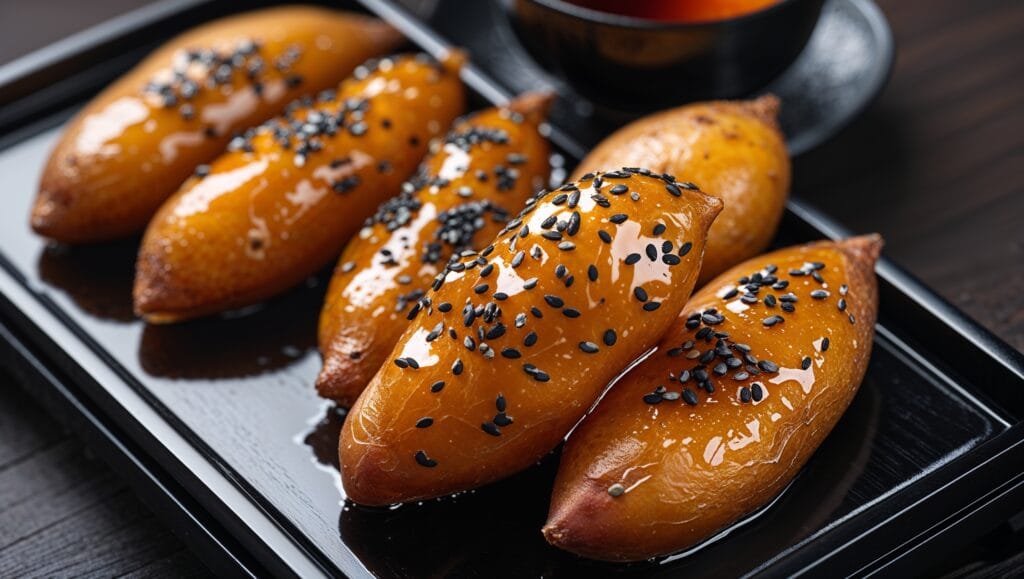
Japan’s sweet potatoes (satsumaimo) are naturally sweet and used in many desserts. Some favorites include:
- Daigaku Imo (大学芋) – Deep-fried sweet potato coated in caramelized sugar.
- Imo Yokan (芋羊羹) – A yokan made from sweet potatoes instead of red beans.
- Sweet potato Mont Blanc – A Western-inspired dessert with a Japanese twist.
These desserts highlight the natural sweetness and creamy texture of Japanese sweet potatoes.
Kakigori (かき氷) – The Ultimate Summer Shaved Ice 🍧
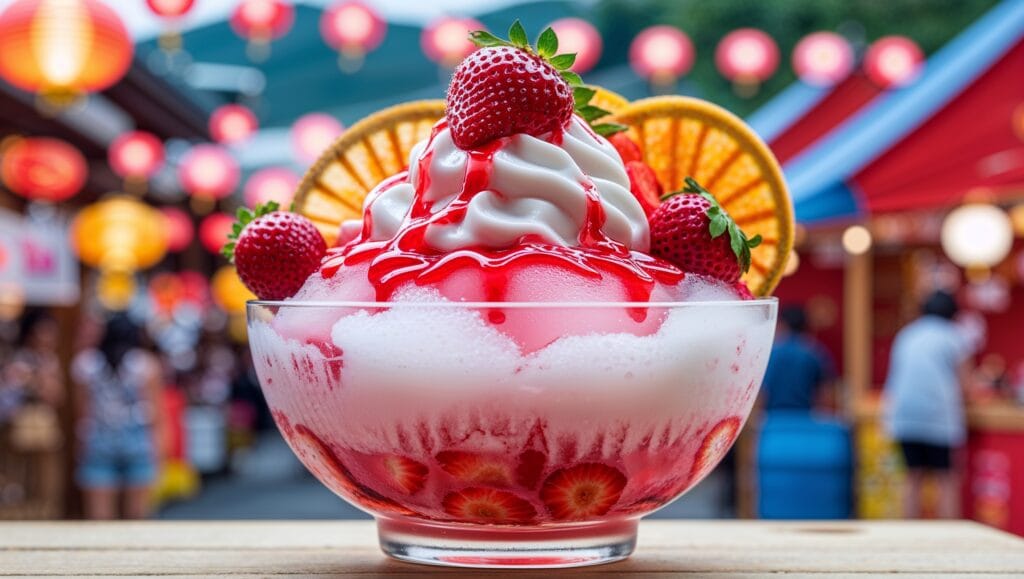
Kakigori is Japan’s answer to snow cones but taken to the next level! Made from finely shaved ice and topped with flavored syrups, it comes in flavors like:
- Strawberry (いちご)
- Matcha (抹茶) with red beans
- Mango or yuzu (ゆず, a Japanese citrus fruit)
Some modern versions even include condensed milk, ice cream, and mochi toppings for extra indulgence.
Where to Find the Best Japanese Desserts?
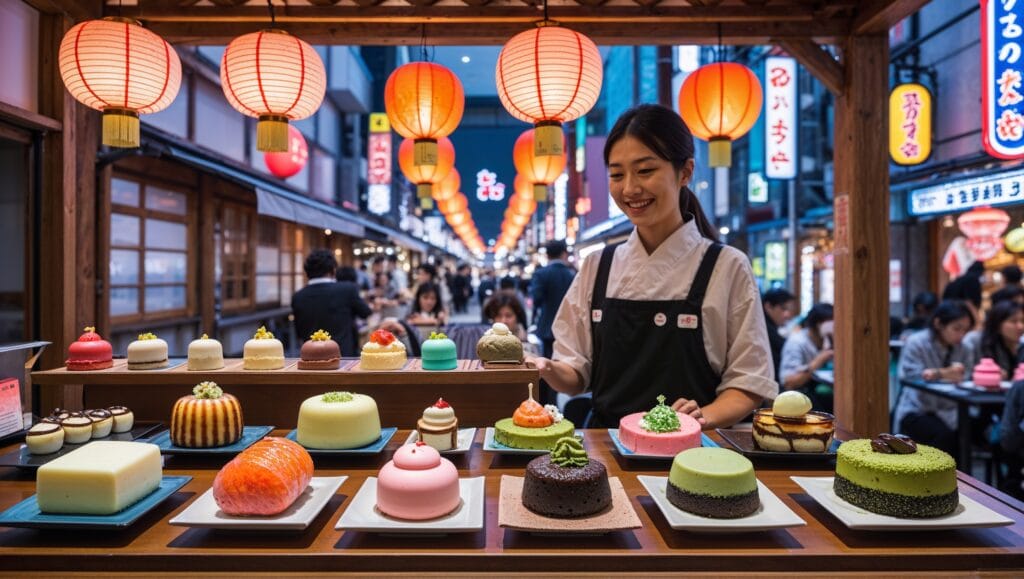
Looking for authentic Japanese desserts? Here are some top spots:
- Tokyo: Visit renowned sweet shops in Asakusa or Harajuku.
- Kyoto: Try traditional wagashi in tea houses near Kiyomizu-dera.
- New York & LA: Check out specialty Japanese bakeries and dessert cafés.
You can also make these desserts at home with easy Japanese dessert recipes available online!
Final Thoughts: Which Japanese Dessert Will You Try First?
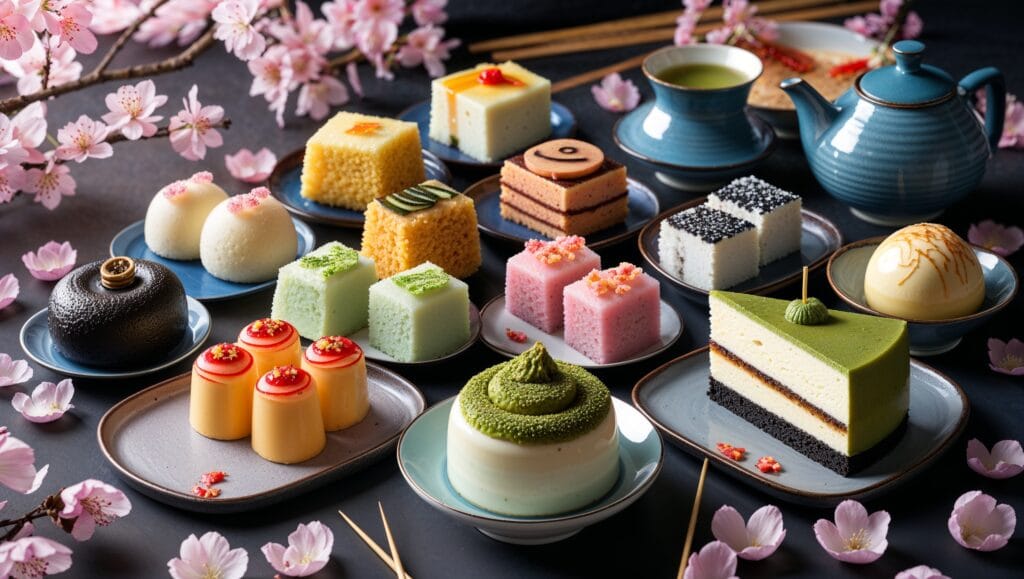
Japanese desserts are not just food—they’re an experience! Whether you love chewy mochi, fluffy cheesecake, or refreshing kakigori, there’s a treat for everyone. Each dessert has its own story and history, connecting it to Japanese culture and tradition.
Next time you’re craving something sweet, why not try a Japanese dessert? If you can’t visit Japan, many of these treats can be made at home using simple recipes. Which dessert are you excited to try? Let us know in the comments below! 😊🍡🍰
- Irresistible Spicy Mayo Recipe: 5-Minute Secret to a Flavorful Kick
- 10 Secrets to Perfect Slow Cooker Beef Tips with Gravy – Easy and Delicious!
- 10 Irresistible German Desserts You Must Try
- 10 Irresistible Indian Desserts That Will Sweeten Your Day
- 10-Step Guide to the Best Chocolate Cupcake Recipe: Moist, Rich, and Easy to Make



